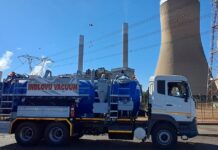(Apologies to those who understand these things in advance, and hopefully the rest of us may derive some benefit!)
AFTER persevering with a petrol powered generator for five years, the noise and especially the cost of fuel (At Stage 6 in excess of R5 000/mth) got me down. My 7 kVA generator did an admirable and reliable task of keeping my house powered during loadshedding so long as the blackouts occurred between 08:00 and 10:00 – estate rules and neighbour complaints from sleepy heads especially over the weekends.
Taking the plunge into battery storage, solar panels and inverters as I did a fortnight ago has caused these tired eyes to blink open even further than usual as I now have an ‘App’ that not only gives me real time usage of various appliances and a recent history of what’s been happening with my solar system, but actually shows me my power consumption at any given time and whether it’s being supplied by the grid, panels or the battery or a combination of all three.
Clever stuff!
While it’s new to me I’m aware that such black magic has been available both locally and especially overseas for several years.
Smart inverter
I was somewhat mistakenly under the impression that the solar panels supplied the battery with energy via the inverter, with it acting as a battery charger, and then converted the DC to AC to feed the home network during loadshedding, topping up the battery when grid power returned.
That as I was informed by the very efficient installer, is only part of the story and I actually have paid for a smart inverter that monitors and manages usage, outages, grid and panel inputs.
The inverter’s ‘brain’ works on a sort of triage system, selecting the most appropriate energy source in an order of priority. This ensures that the solar panels will power both battery recharge and appliance usage if conditions are right. That means that, on a sunny day with a full battery and loadshedding, if the load is less than the output of the panels then the sun provides the load with ‘free’ energy.
Even if the load is greater than the panels can provide and there is no loadshedding on a sunny day, the ‘draw’ from the grid is only what needs to be topped up from that provided by the panels.
The inverter is wired for essential and non-essential load meaning that high consumption appliances – usually with heating elements such as your geyser, oven and electric hob – are effectively switched off during loadshedding events, thus preserving battery power for the essentials such as lights, TV, computers and of course, the internet hardware.
My installation was carried out very efficiently although there were a few hiccups due to some dodgy and short cut wiring on the board carried out prior to my ownership. Once faults were traced, the system is behaving as designed and what a pleasure to feel immune to the dreaded loadshedding.
Some discipline is however required during loadshedding, not to switch on multiple high load appliances all at once – the toaster, kettle and microwave for example, as I did without a second thought when we had Eskom power in the old days.
Speaking of the old days, when I lived in Johannesburg during the 70’s, many homes were fitted with ripple controllers which are radio controlled devices that remotely allow the municipality to switch off geysers during the morning and evening peaks, taking pressure off the grid. Why they were abandoned is anyone’s guess but our new Minister of Electricity has woken up to the fact that ripple controllers fitted to the nations geyser population could spare Eskom of 400MW of collective power.
Nothing new under the sun then, except smart inverters perhaps!
Eish.















